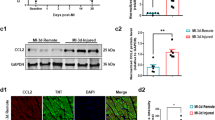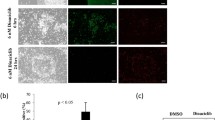Abstract
Cyclosporine (CsA) has become a mainstay for immune suppression of organ transplants. It is known that patients receiving CsA manifest increased growth of aggressive cardiotoxicity. We have demonstrated that CsA induces myocardium cell apoptosis in vivo and vitro. Recently, dishevelled-1 (Dvl-1) protein, which is a cytoplasmic mediator of Wnt/β-catenin signaling, was explored in cardiac diseases. However, whether Dvl-1 is involved in CsA-induced apoptosis remains to be determined. The aim of this study was to explore the role of Dvl-1 in CsA-induced apoptosis in H9c2 cardiomyoblast cells and to investigate the role of the Wnt/β-catenin signaling cascade in this progress. H9c2 cells were treated with CsA in dose and time-dependent manners. We found that the appropriate concentrations and time-points of CsA-induced the expression of Dvl-1 and subsequent up-regulation of β-catenin and c-Myc, which is consistent with previously demonstrated concentrations and time-points when H9c2 cells apoptosis occurred. Then, cells were transfected with small interfering RNA (siRNA) against Dvl-1 and stimulated with previously demonstrated concentration of CsA. Dvl-1 down-regulation decreased the apoptotic rate, caspase-3 activity, and the Bax/Bcl-2 ratio in H9c2 cells treated with CsA. Furthermore, knocking down the expression of Dvl-1 partially suppressed the activity of the Wnt/β-catenin pathway. Moreover, we further deleted the downstream member β-catenin by specific siRNA, and found that CsA-induced the Bax/Bcl-2 ratio and the expression of c-Myc, which were attenuated. Our results are the first to unveil this novel aspect of Dvl-1 signaling. In addition, these data provide insight into the pathogenesis and the therapeutic strategies of CsA-induced myocardial injury.








Similar content being viewed by others
References
Laczkovics A, Havel M, Teufelsbauer H, Horvath R, Schreiner W, Wolner E (1987) Cyclosporin-A induced heart failure after orthotopic heart transplantation. Thorac Cardiovasc Surg 35:83–86
Wongmekiat O, Thamprasert K (2005) Investigating the protective effects of aged garlic extract on cyclosporin-induced nephrotoxicity in rats. Fundam Clin Pharmacol 19:555–562
Selcoki Y, Uz E, Bayrak R, Sahin S, Kaya A, Uz B, Karanfil A, Ozkara A, Akcay A (2007) The protective effect of erdosteine against cyclosporine A-induced cardiotoxicity in rats. Toxicology 239:53–59
Rezzani R, Rodella LF, Fraschini F, Gasco MR, Demartini G, Musicanti C, Reiter RJ (2009) Melatonin delivery in solid lipid nanoparticles: prevention of cyclosporine A induced cardiac damage. J Pineal Res 46:255–261
Zhao Y, Hou G, Zhang Y, Chi J, Zhang L, Zou X, Tang J, Liu Y, Fu Y, Yin X (2011) Involvement of the calcium-sensing receptor in cyclosporin A-induced cardiomyocyte apoptosis in rats. Pharmazie 669:68–974
Ozkan G, Ulusoy S, Alkanat M, Orem A, Akcan B, Ersoz S, Yulug E, Kaynar K, Al S (2012) Antiapoptotic and antioxidant effects of GSPE in preventing cyclosporine A-induced cardiotoxicity. Ren Fail 34:460–466
Rezzani R, Rodella LF, Bonomini F, Tengattini S, Bianchi R, Reiter RJ (2006) Beneficial effects of melatonin in protecting against cyclosporine A-induced cardiotoxicity are receptor mediated. J Pineal Res 41:288–295
Waldmeier PC, Feldtrauer JJ, Qian T, Lemasters JJ (2002) Inhibition of the mitochondrial permeability transition by the nonimmunosuppressive cyclosporin derivative NIM811. Mol Pharmacol 62:22–29
Gao C, Chen YG (2010) Dishevelled: the hub of Wnt signaling. Cell Signal 22:717–727
Wallingford JB, Habas R (2005) The developmental biology of Dishevelled: an enigmatic protein governing cell fate and cell polarity. Development 132:4421–4436
Moon RT, Kohn AD, De Ferrari GV, Kaykas A (2004) WNT and beta-catenin signalling: diseases and therapies. Nat Rev Genet 5:691–701
van Gijn ME, Snel F, Cleutjens JP, Smits JF, Blankesteijn WM (2001) Overexpression of components of the Frizzled-Dishevelled cascade results in apoptotic cell death, mediated by beta-catenin. Exp Cell Res 265:46–53
Malekar P, Hagenmueller M, Anyanwu A, Buss S, Streit MR, Weiss CS, Wolf D, Riffel J, Bauer A, Katus HA, Hardt SE (2010) Wnt signaling is critical for maladaptive cardiac hypertrophy and accelerates myocardial remodeling. Hypertension 55:939–945
van de Schans VA, van den Borne SW, Strzelecka AE, Janssen BJ, van der Velden JL, Langen RC, Wynshaw-Boris A, Smits JF, Blankesteijn WM (2007) Interruption of Wnt signaling attenuates the onset of pressure overload-induced cardiac hypertrophy. Hypertension 49:473–480
Chi J, Zhu Y, Fu Y, Liu Y, Zhang X, Han L, Yin X, Zhao D (2012) Cyclosporin A induces apoptosis in H9c2 cardiomyoblast cells through calcium-sensing receptor-mediated activation of the ERK MAPK and p38 MAPK pathways. Mol Cell Biochem 367:227–236
Yeh CT, Yao CJ, Yan JL, Chuang SE, Lee LM, Chen CM, Yeh CF, Li CH, Lai GM (2011) Apoptotic Cell Death and Inhibition of Wnt/beta-Catenin Signaling Pathway in Human Colon Cancer Cells by an Active Fraction (HS7) from Taiwanofungus camphoratus. Evidence Based Complement Altern Med 2011:750230
Uematsu K, He B, You L, Xu Z, McCormick F, Jablons DM (2003) Activation of the Wnt pathway in non small cell lung cancer: evidence of dishevelled overexpression. Oncogene 22:7218–7221
Clevers H (2006) Wnt/beta-catenin signaling in development and disease. Cell 127:469–480
Sundarraj S, Thangam R, Sreevani V, Kaveri K, Gunasekaran P, Achiraman S, Kannan S (2012) Gamma-Sitosterol from Acacia nilotica L. induces G2/M cell cycle arrest and apoptosis through c-Myc suppression in MCF-7 and A549 cells. J Ethnopharmacol 141(3):803–809
Jarvinen K, Hotti A, Santos L, Nummela P, Holtta E (2011) Caspase-8, c-FLIP, and caspase-9 in c-Myc-induced apoptosis of fibroblasts. Exp Cell Res 317:2602–2615
Klaus A, Birchmeier W (2008) Wnt signalling and its impact on development and cancer. Nat Rev Cancer 8:387–398
Tzahor E (2007) Wnt/beta-catenin signaling and cardiogenesis: timing does matter. Dev Cell 13:10–13
Parmalee NL, Kitajewski J (2008) Wnt signaling in angiogenesis. Curr Drug Targets 9:558–564
Sharov VG, Todor A, Khanal S, Imai M, Sabbah HN (2007) Cyclosporine A attenuates mitochondrial permeability transition and improves mitochondrial respiratory function in cardiomyocytes isolated from dogs with heart failure. J Mol Cell Cardiol 42:150–158
Florio S, Ciarcia R, Crispino L, Pagnini U, Ruocco A, Kumar C, D’Andrilli G, Russo F (2003) Hydrocortisone has a protective effect on CyclosporinA-induced cardiotoxicity. J Cell Physiol 195:21–26
Tang J, Wang G, Liu Y, Fu Y, Chi J, Zhu Y, Zhao Y, Yin X (2011) Cyclosporin A induces cardiomyocyte injury through calcium-sensing receptor-mediated calcium overload. Pharmazie 66:52–57
Hail N Jr, Carter BZ, Konopleva M, Andreeff M (2006) Apoptosis effector mechanisms: a requiem performed in different keys. Apoptosis 11:889–904
Oltersdorf T, Elmore SW, Shoemaker AR, Armstrong RC, Augeri DJ, Belli BA, Bruncko M, Deckwerth TL, Dinges J, Hajduk PJ, Joseph MK, Kitada S, Korsmeyer SJ, Kunzer AR, Letai A, Li C, Mitten MJ, Nettesheim DG, Ng S, Nimmer PM, O’Connor JM, Oleksijew A, Petros AM, Reed JC, Shen W, Tahir SK, Thompson CB, Tomaselli KJ, Wang B, Wendt MD, Zhang H, Fesik SW, Rosenberg SH (2005) An inhibitor of Bcl-2 family proteins induces regression of solid tumours. Nature 435:677–681
Gu X, Yao Y, Cheng R, Zhang Y, Dai Z, Wan G, Yang Z, Cai W, Gao G, Yang X (2011) Plasminogen K5 activates mitochondrial apoptosis pathway in endothelial cells by regulating Bak and Bcl-x(L) subcellular distribution. Apoptosis 16:846–855
Fodde R, Brabletz T (2007) Wnt/beta-catenin signaling in cancer stemness and malignant behavior. Curr Opin Cell Biol 19:150–158
D’Mello SR, Anelli R, Calissano P (1994) Lithium induces apoptosis in immature cerebellar granule cells but promotes survival of mature neurons. Exp Cell Res 211:332–338
Madiehe AM, Mampuru LJ, Tyobeka EM (1995) Induction of apoptosis in HL-60 cells by lithium. Biochem Biophys Res Commun 209:768–774
Strovel ET, Sussman DJ (1999) Transient overexpression of murine dishevelled genes results in apoptotic cell death. Exp Cell Res 253:637–648
Eischen CM, Woo D, Roussel MF, Cleveland JL (2001) Apoptosis triggered by Myc-induced suppression of Bcl-X(L) or Bcl-2 is bypassed during lymphomagenesis. Mol Cell Biol 21:5063–5070
Wang C, Tai Y, Lisanti MP, Liao DJ (2011) c-Myc induction of programmed cell death may contribute to carcinogenesis: a perspective inspired by several concepts of chemical carcinogenesis. Cancer Biol Ther 11:615–626
Eischen CM, Packham G, Nip J, Fee BE, Hiebert SW, Zambetti GP, Cleveland JL (2001) Bcl-2 is an apoptotic target suppressed by both c-Myc and E2F–1. Oncogene 20:6983–6993
Acknowledgments
We thank Dr. Hong Ling for the generous gift of the H9c2 cell line. This study was supported by the National Natural Science Foundation of China (30872387) and the Postgraduate Foundation of the National Education Ministry of China (200802260006).
Author information
Authors and Affiliations
Corresponding authors
Rights and permissions
About this article
Cite this article
Zhu, Y., Chi, J., Liu, Y. et al. Knockdown of dishevelled-1 attenuates cyclosporine A-induced apoptosis in H9c2 cardiomyoblast cells. Mol Cell Biochem 374, 113–123 (2013). https://doi.org/10.1007/s11010-012-1510-9
Received:
Accepted:
Published:
Issue Date:
DOI: https://doi.org/10.1007/s11010-012-1510-9




